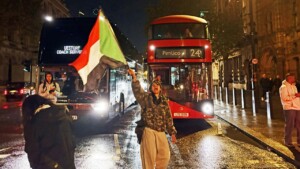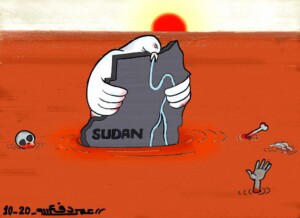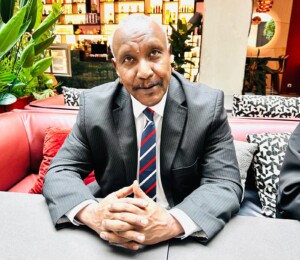Sudan OCHA bulletin 26: Sudan hosts 360,000 refugees and asylum seekers
World Refugee Day was marked on 20 June across the world, to highlight the courage and resilience of people forced to flee war or persecution.
World Refugee Day was marked on 20 June across the world, to highlight the courage and resilience of people forced to flee war or persecution.
According to a report by the UN Refugee Agency (UNHCR), 65.3 million people were displaced globally as of the end of 2015, compared to 59.5 million just twelve months earlier. This is the first time that the threshold of 60 million has been crossed and means that one in every 113 people globally is now either an asylum seeker, displaced or a refugee, the UN Office for the Coordination of Humanitarian Affairs (OCHA) in Sudan reported in its latest weekly bulletin.
Sudan hosts some 360,000 refugees and asylum seekers from nearby countries, namely Central African Republic (CAR), Chad, Ethiopia, Eritrea, South Sudan, Syria, and Yemen. South Sudanese comprise the largest refugee population in Sudan, with over 231,000 arrivals since conflict erupted in South Sudan in December 2013.
Since the start of 2016, South Sudanese have also come in large numbers to Darfur, with 53,000 arrivals in East Darfur and over 5,000 in South Darfur to date. Significant numbers of South Sudanese are also present in settlements and host communities in Khartoum, West Kordofan, South Kordofan and Blue Nile states. White Nile State hosts the majority of the South Sudanese, with over 95,000 refugees living across eight designated sites and host communities in the state.
In addition to the recent South Sudanese arrivals in Darfur, there are 8,300 Chadian refugees in Um Shalaya and Mukjar refugee camps in Central Darfur, and some 1,300 refugees from CAR in Nyala, South Darfur who continue to rely on humanitarian support.
Over the past week, new arrivals from South Sudan’s Western Bahr El Ghazal state were reported in parts of East Darfur. The overall number of new arrivals from South Sudan, mainly from Raja, is estimated to be 7,000-8,000 people. Most of the refugees are older people, children and women who came on foot and their condition is very poor.
Suspected measles cases, vaccination campaign in Khor Omer
Following reports of a measles outbreak among South Sudanese refugee children in Abu Jabra, East Darfur, the World Health Organization (WHO) supported a verification mission to the area.
There are 52 suspected measles cases in East Darfur, of which six are laboratory confirmed cases. The WHO and the East Darfur Ministry of Health are currently carrying out active case finding and case management. So far in Khor Omer, 3,131 children under 17 were vaccinated against measles, but more vaccinations are needed as families (including children) often move in and out of the refugee camp to undertake livelihood activities. As routine measles vaccinations continue in Khor Omer and Abu Jabra, more information will become available about the vaccination coverage rate.
Violence in Tur, Central Darfur
An estimated 17,000 people fled Tur village and Tur East site for the displaced, and sought refuge near a Sudan Armed Forces (SAF) military base (2 km from Tur), after the area was attacked by militiamen on 20-21 June. According to media reports, five people were killed and 13 injured, while the market and houses in the area were plundered and torched. A Unamid team visited Tur on 23-24 June and confirmed that these 17,000 people have returned to the Tur East site.
No verification exercise has been carried out as yet to determine the exact number of people in need, OCHA reports. Food, water and sanitation, shelter and health are the priority concerns. Unamid has resumed patrols in and around the Tur East site for the displaced. Most humanitarian action in Tur is carried out through line ministries.
Inter-communal violence in West Darfur's Um Tajok
Humanitarian organisations have temporarily suspended their operations since armed clashes began between pastoralists and farmers in Um Tajok village, Kereinik locality in West Darfur on 22 June. According to government sources, 22 people have been killed, 12 people wounded, and three villages burnt down.
The organisations which provide basic services, have moved their staff to the state capital, El Geneina. This may have an impact on the delivery of basic services for the local community, if activities cannot resume soon. Government security forces have been dispatched to the area, but the security situation is reported to be tense.
Response for new displaced in West Kordofan
Following the displacement of an estimated 1,800 people to Abu Zabad in West Kordofan, as a result of hostilities in South and West Kordofan, an emergency team of the state Health Ministry conducted a rapid response on 22 June, assessing 482 of the displaced people.
An inter-sector mission is planned from 26 to 28 June to assess humanitarian needs and the extent of displacement, for which travel permits have been granted.
Response for Jebel Marra displaced continues
According to the 2016 Humanitarian Needs Overview, some 3.3 million people are currently in need of humanitarian assistance in Darfur, including 2 million displaced, 1.2 million residents, 62,000 refugees, and 94,000 returnees. Many of the displaced need aid since the outbreak of the Darfur conflict in 2003.
During the first five months of 2016, 80,000 people were newly displaced across Darfur, according to the UN and partners. Up to an additional 127,000 people were also reportedly displaced (in addition to another 15,000 who have reportedly returned), but the UN and partners have been unable to verify these figures due to a lack of access to the relevant locations. The vast majority of the displacement in 2016 has been triggered by the conflict in the Jebel Marra area that began in January. Humanitarian actors continue to assess needs and provide assistance and basic services to thousands of new displaced, returnees and other affected communities, in parts of South, Central, and North Darfur as a result of Jebel Marra hostilities.
Returnees in Um Baru, North Darfur
On 22 June an armed group attacked villages in Um Baru locality, 300 km northwest of El Fasher, the North Darfur capital. Residents, including refugee returnees from Chad, said that the attackers stole their food and shelters.
UNHCR is planning to conduct a registration exercise soon in Um Baru to determine the number of displaced and refugee returnees in the area, as current estimates vary. The first wave of displacement from Um Baru took place in 2003, with limited and spontaneous return occurring in January 2004. Some people returned in 2008, and others in 2014. A second wave of displacement of the previously returned took place in January 2015, mostly to Um Baru town or El Fasher. People stayed there for between 2 weeks and 6 months; return movements continue. Returns from Chad to some villages in Um Baru have been reported, but are as yet unverified.











 and then
and then